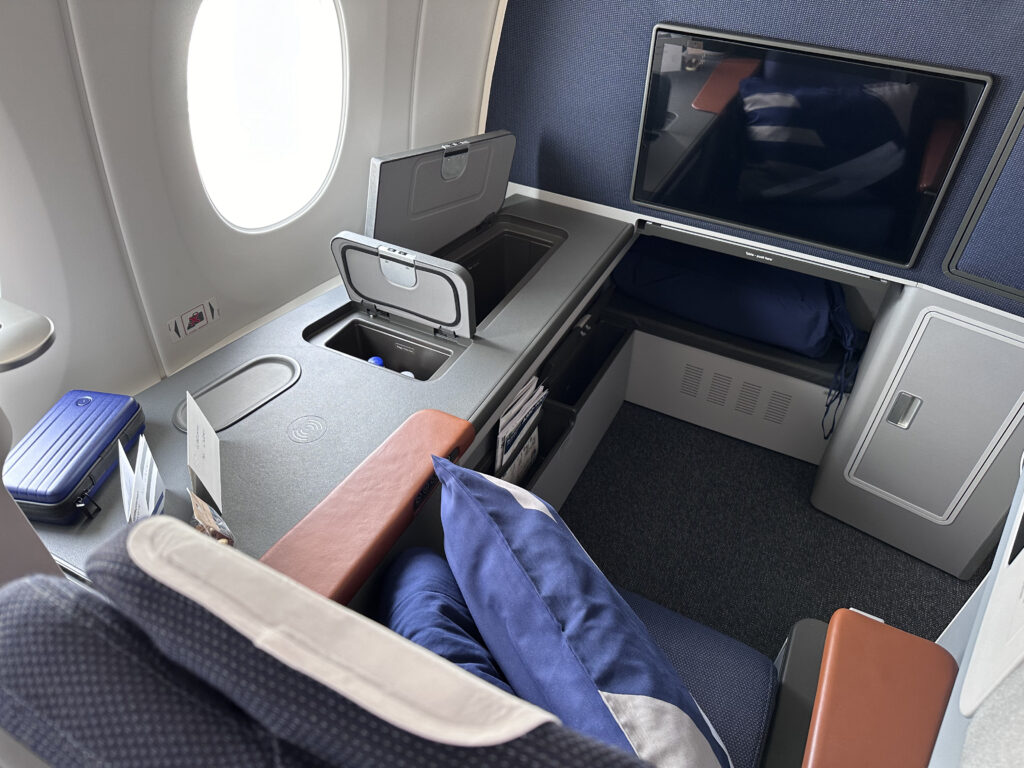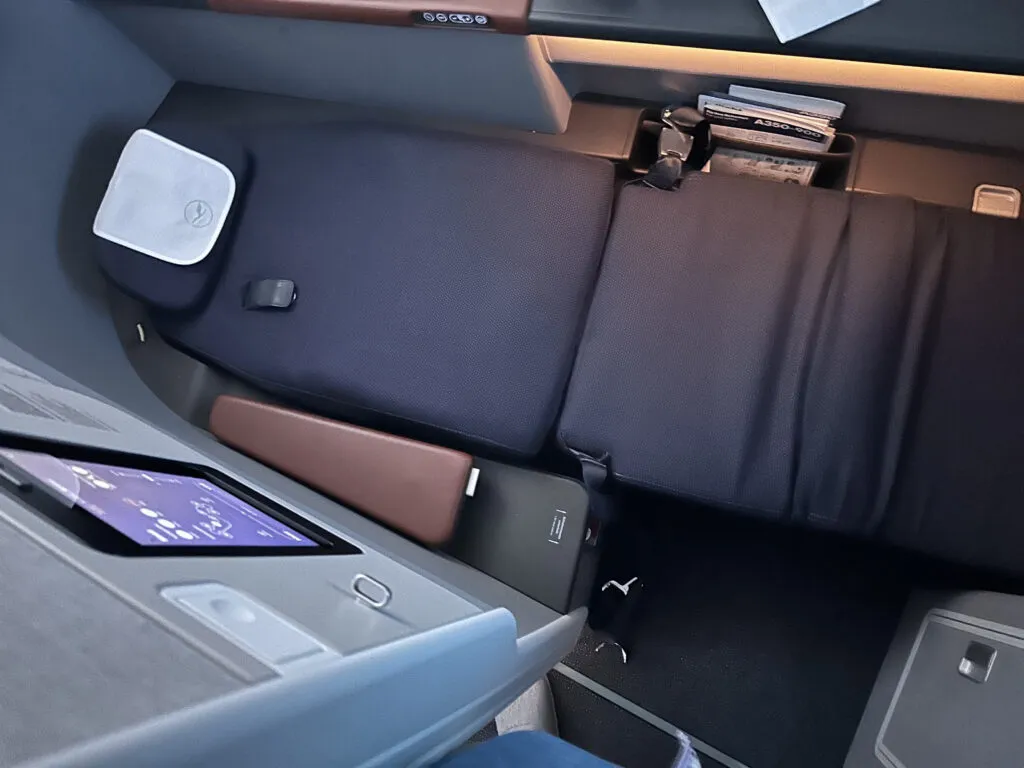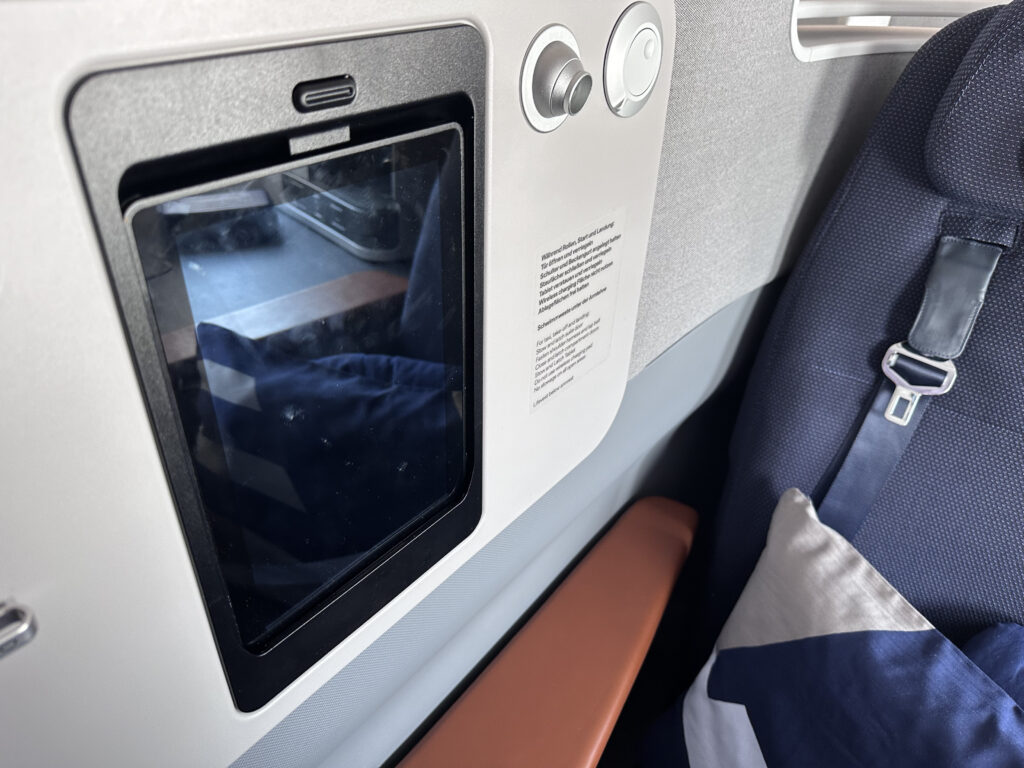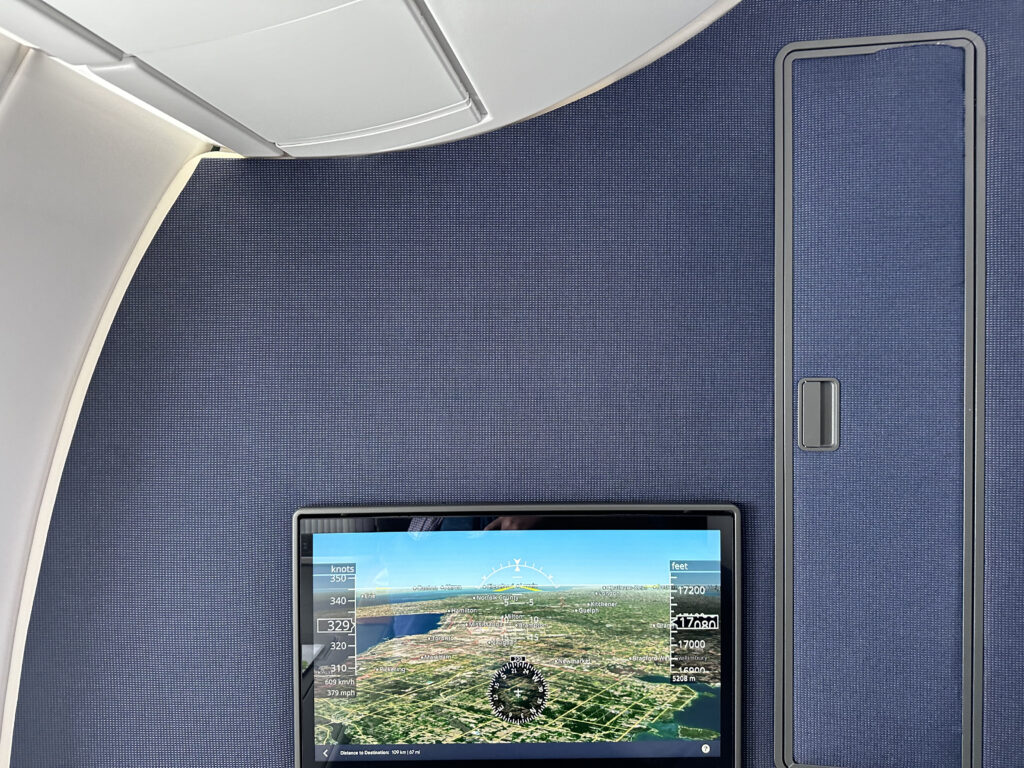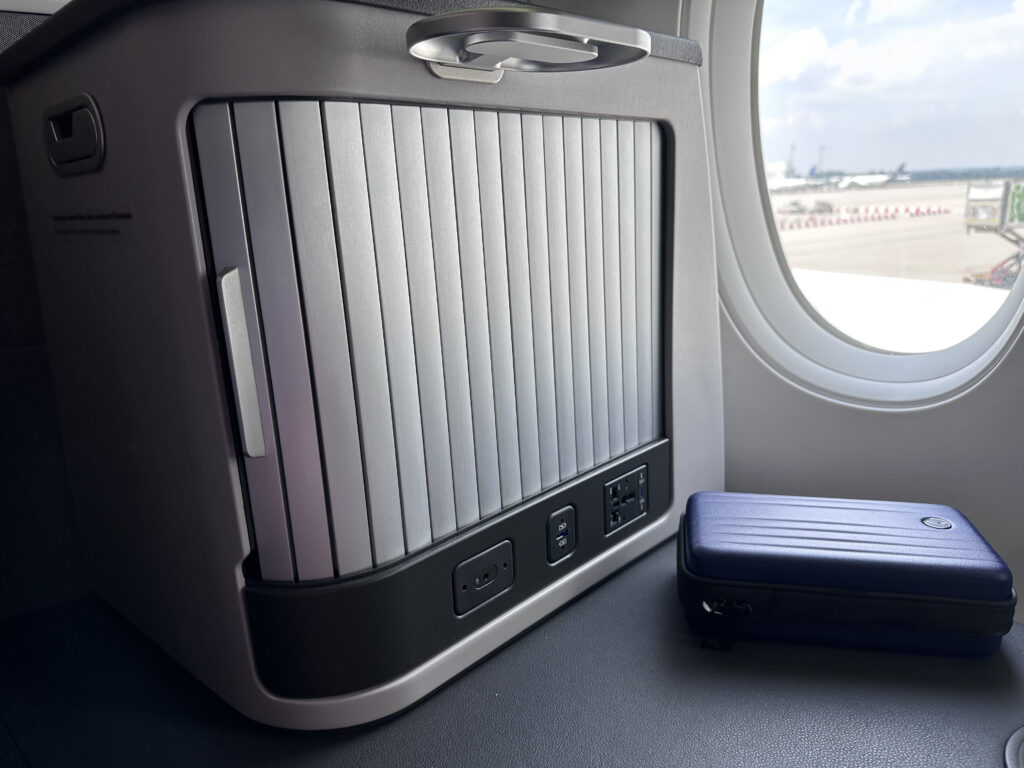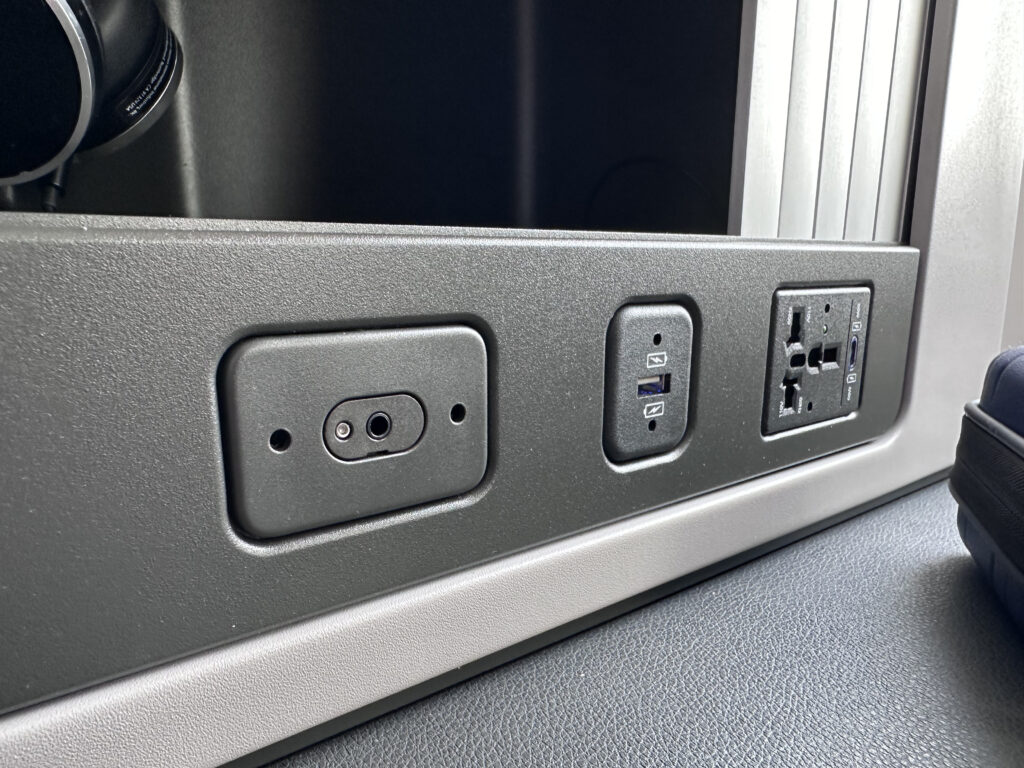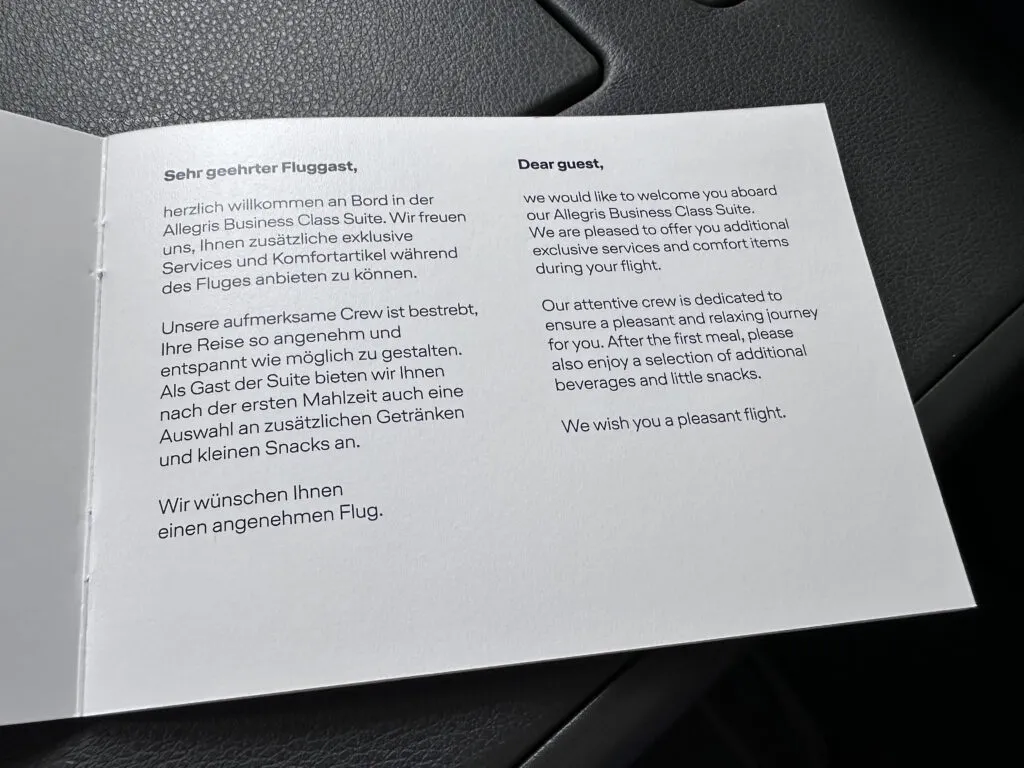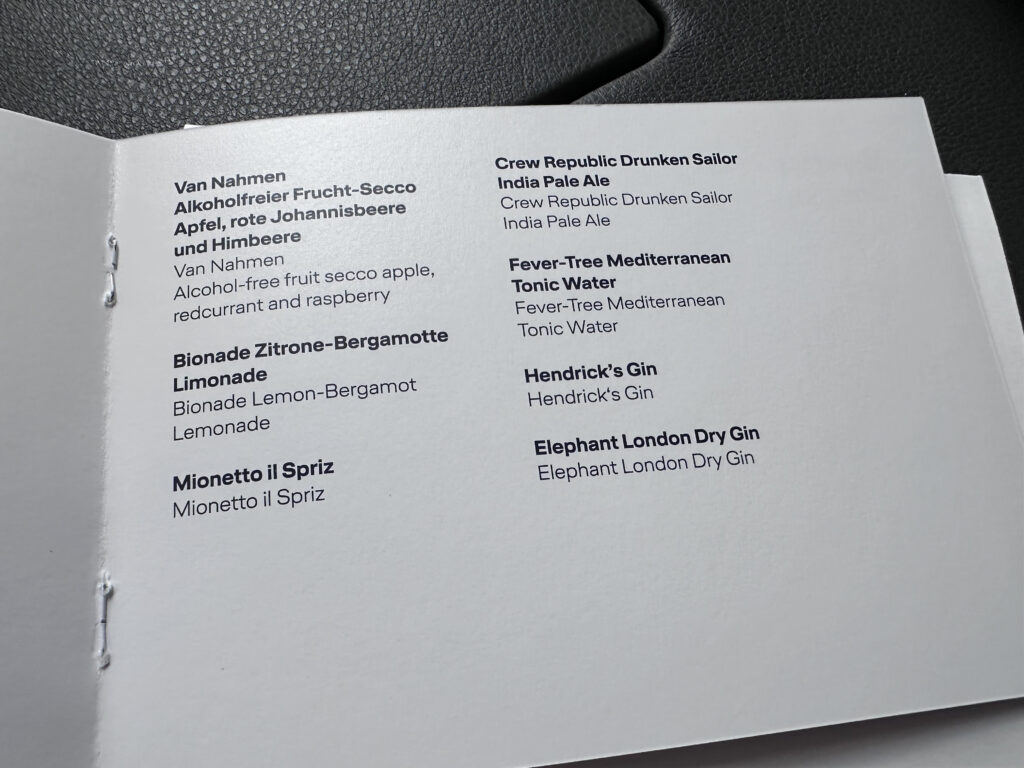 Flying Lufthansa’s much-anticipated Allegris business class — full disclosure, as a guest of the airline — in its business-plus front-row Business Suite — was a fascinating experience for this journalist, coming the best part of a decade after the product was first revealed.
Flying Lufthansa’s much-anticipated Allegris business class — full disclosure, as a guest of the airline — in its business-plus front-row Business Suite — was a fascinating experience for this journalist, coming the best part of a decade after the product was first revealed.
Yes, Allegris is late, and yes, the first class cabin on the A350s is empty apart from a few economy seats. Crew now use the front galley as an on-duty rest area. But what’s it like to fly?
I should be clear that I can’t comment on a key part of the Allegris experience: making the choice about which of the seven types of seat on board to select, and for what price: Lufthansa popped me in the front-row Business Suite for this outbound journey, and so this piece contains thoughts purely about that product.
The Business Suite is very private: the high walls cut off both sight and sound of the rest of the cabin, giving an exclusive hideaway sort of feel.
It’s remarkably spacious, matching products like JAL’s Safran Unity, ANA’s Safran Fusio, or Qatar’s Collins Qsuite that are all strong doored mini-suites in the market. I should note, though, that those products are not the front-row business-plus seats, but rather every seat in the cabin.
This A350 version, Lufthansa tells me, is manufactured by Stelia, but to Lufthansa specifications.
In terms of functionality, the Business Suite has four preset positions and infinite adjustability for back, seat pan, and legrest. There’s a cushion firmness adjuster that didn’t seem to do much, and a lumbar adjuster that didn’t either.
Controls for everything from seat to IFE are via a large iPad-sized tablet sat into the wall. This is largely unwieldy unless removed from the dock. Overall, I’d have preferred a separate panel for seat controls.
The Safran RAVE IFE screen is 27″. It’s the same size screen as the Virgin Atlantic Retreat Suite, but feels smaller in context despite being closer, and I think it’s because it’s marooned in the big blue bulkhead. Lufthansa’s noise-cancelling headphones were fine, so I didn’t bother trying to pair my own this time round.
I absolutely adored my new favourite thing in business class: individual temperature controls via in-seat heating and cooling, adjustable from the tablet.
On a hot summer’s day in Munich the cool air wafting through the backrest was an utter delight, while the door-side air gasper was also very welcome given the lack of overhead air vents.
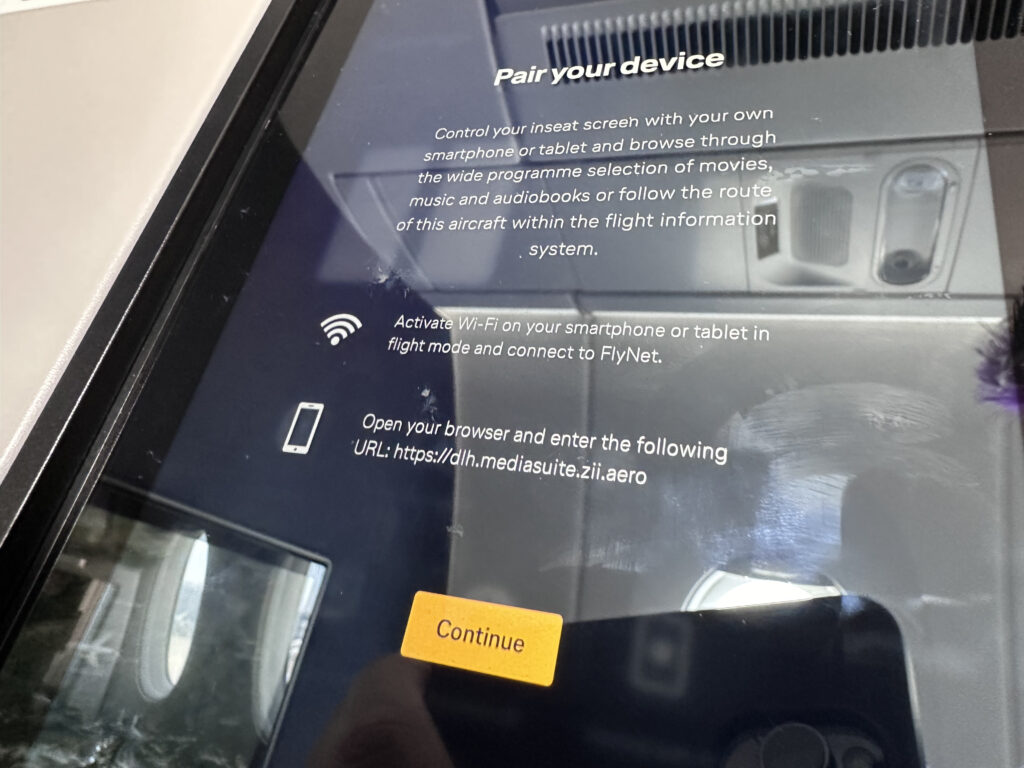
Device pairing was also available, but with the tablet right there I didn’t find it necessary. Image: John Walton
The colour, materials and finish (CMF) are, as expected, slightly improved from the early 2010s Lufthansa business. It’s still very dark blue (although the bulkhead is now a sound-muffling fabric), light grey (although here too the shrouding is fabric and sound-muffling), with some dark grey and mid brown leather elements on side table and armrests, respectively.
There’s a huge amount of small to medium storage boxes — frankly, too many smaller sizes, rather than a couple of options that will stow a decently sized handbag or messenger bag without having to turn it on its end.

The big cupboard did fit my boots, but my laptop tote would only fit in on its side. Image: John Walton
There are two storage boxes at ankle level, then one as a sort of hanging wardrobe next to the IFE screen, two in the side console (including one that comes preloaded with a couple of bottles of water), plus the sliding storage cupboard in which the headphones are located.
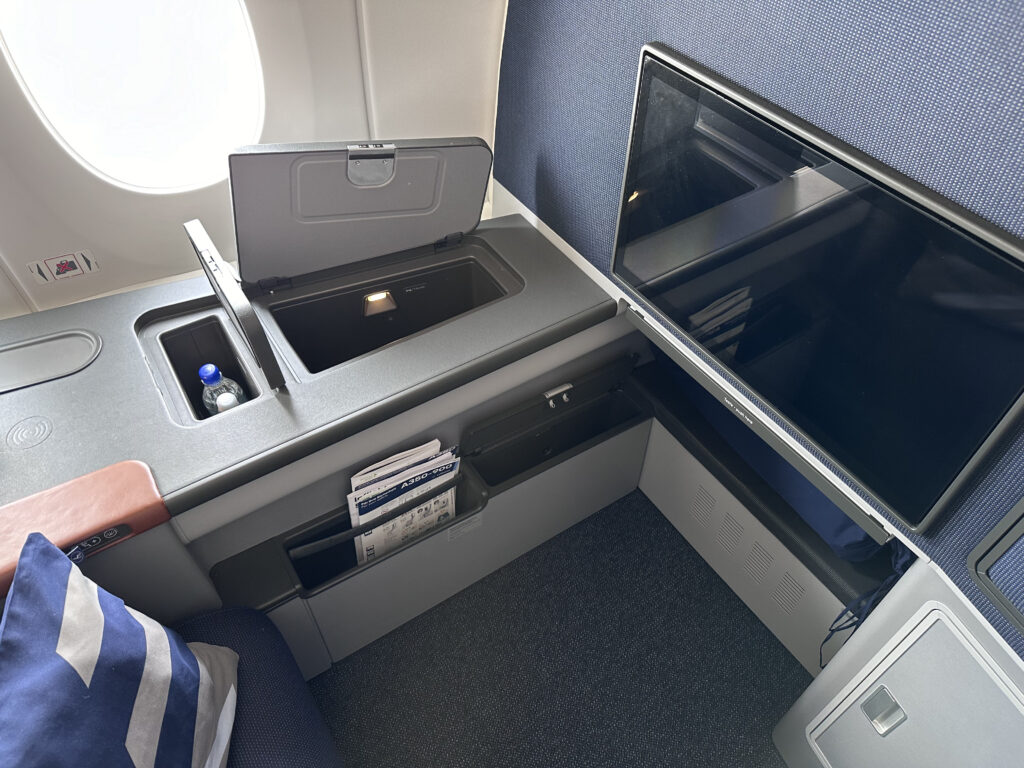
The storage boxes mean that Lufthansa can stow away much of the pile of soft product I call Mount Blankets
Allow me to pontificate on the sliding storage cupboard and specifically its unattractive door for a moment, because it has been quite some time since I have had so visceral a reaction to a piece of cabin furnishing.
It is so early-2000s-shared-office unpleasant — and when so many seatmakers are offering such attractive, signature, even whimsical storage elements — that it gets my #PaxEx goat.
This piece of furniture is so devoid of aesthetic appeal that I have to pause and reflect on the positives: it contains a pleasing amount of power options (AC + USB-A + USB-C, with a wireless charging pad on the side console).
The space also features an external hook for passengers’ own over-the-ear headphones, and a good amount of stowage for wallets, passports, and so on.
Back to elements I like: the large table slides forward from under the IFE screen, and is both stable and sizeable, with the ability to slide it most of the way back to pop out during the meal.
I also very much appreciated the trademark glasses holder that, I believe, are a Lufthansa institution dating back to the days where Airbus’ Ingo Wuggetzer was creating cabins for the German airline.
The soft product remains Lufthansa standard, with a main meal service of three starters and three mains (chicken-fish-or-pasta) shortly after departure and a snack before landing.
The exception here is a small range of options that are marked as exclusive to the Business Suite, including some very sweet no-alcohol “secco” and a small snackbox containing things like almonds and olives that quite frankly I’d expect to find in the self-service galley of a longhaul flight.

These “exclusive service and comfort items” for Business Suite seemed a bit lackluster. Image: John Walton
Lufthansa seems to be walking the line of trying to provide a few nice things for Business Suite that aren’t available in regular Allegris, while not making it a first class experience, but it hasn’t yet hit on how to do it.
Here, I also note three highly visible production quality issues. First, the dark blue fabric on the wardrobe door was coming away quite significantly in one corner.
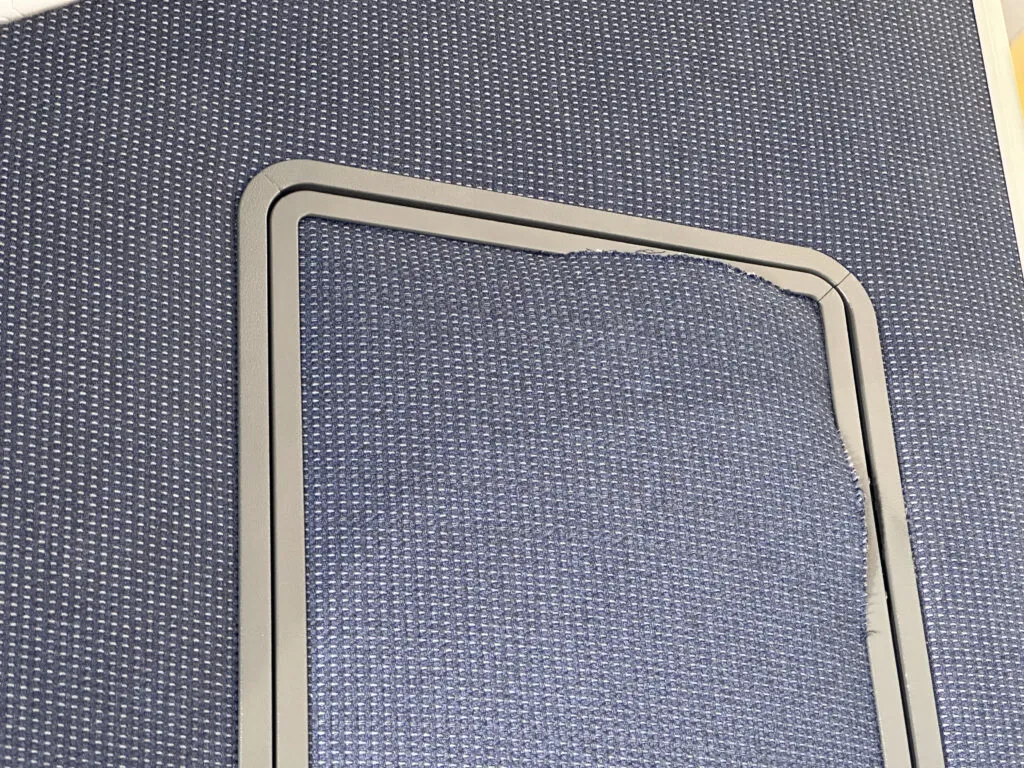
This was the worst example of the drooping, unfixed fabric that covered the front bulkhead. Image: John Walton
Second, the shrouding behind the cupboard was visibly not covering the area it should cover.
And thirdly, the decompression elements — the honeycomb grille on the window side of the seat, plus the plastic and foam elements at the edge of the seat and intersecting the bulkhead and wall/overheads, was not aligned. This is surprising for a Stelia seat, given their focus on perceived quality.
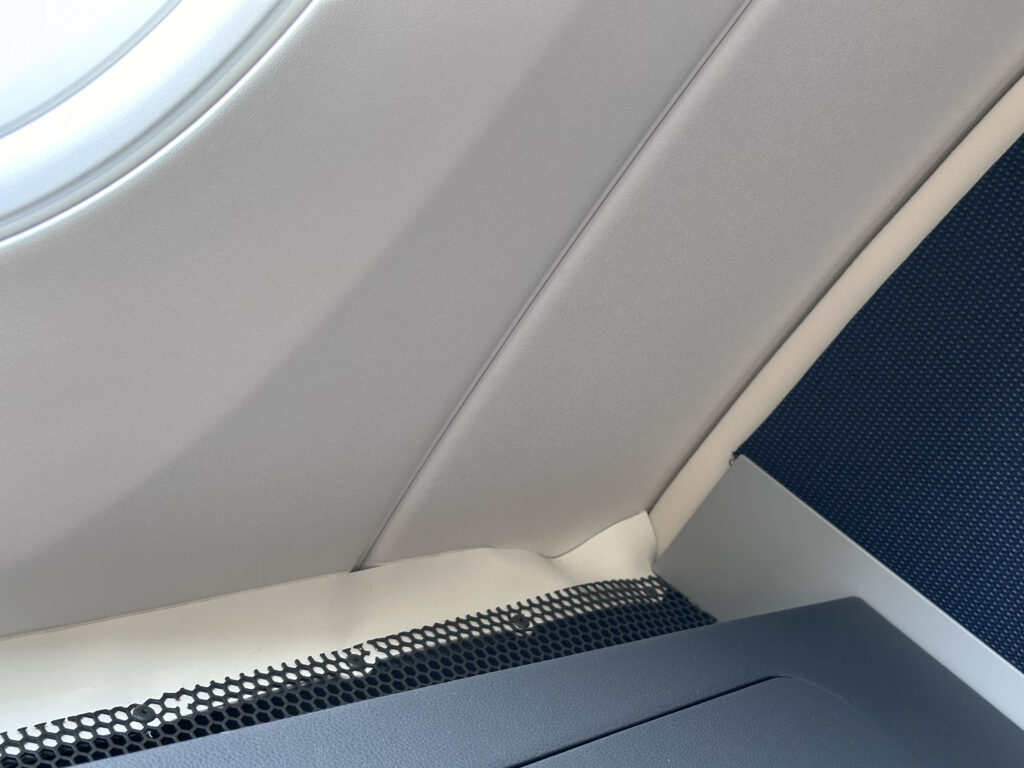
Jaggedly cut decompression lattice and misshapen foams do not present a premium look and feel. Image: John Walton
Altogether, I think this part of the Allegris experience leans a little bit too much towards office design for a modern premium product, especially in the front-row-business-plus space. I think of what airlines like Starlux, Virgin and even Condor have done with their front row business plus seats, and this feels like a missed opportunity to bring a more luxurious feel into the front of business class. Lufthansa’s Allegris Business Suite nonetheless mostly impressed with space and function.
John Walton was a guest of Lufthansa, but all opinions are, as ever, his own.
Related Articles:
- VIDEO: Inside the first Lufthansa A350 fitted with Allegris
- Allegris debuts on A350 as Lufthansa Group grows PaxEx prowess
- Lufthansa’s multi-source IFE sees SPI and PAC in play
- The new cabins of 2024 — and what they will tell us about aviation
- Business-plus, front-row seats: where we are and where we’re going
- Classic aisle seats will be baseline business on Lufthansa Allegris
- Lufthansa’s Allegris business class takes unbundling to the extremes
Featured image credited to John Walton





